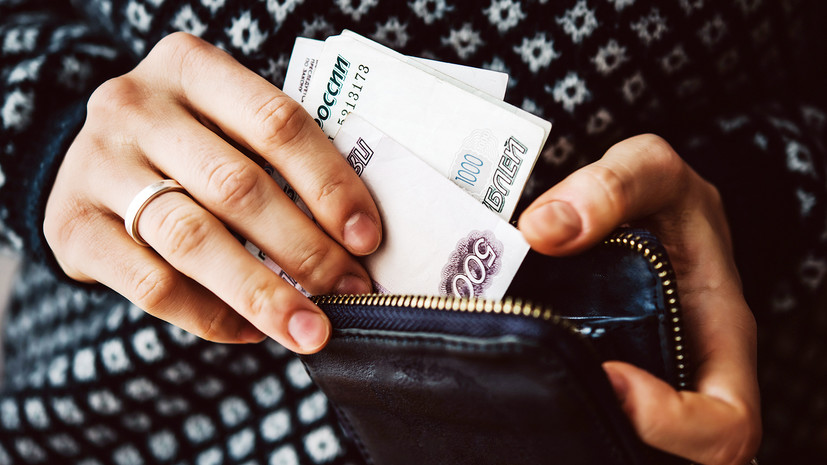From April to June 2021, the real disposable money income of Russians grew by 6.8% compared to the same period in 2020.
This is evidenced by the materials of Rosstat.
As specified in the department, real disposable cash income is the income of citizens minus mandatory payments (taxes, fees, interest on loans), adjusted for inflation.
The last time the growth of the indicator could be observed back in the first quarter of 2020 - by 1.9%.
At the same time, already in the second quarter, as a result of the outbreak of the coronavirus pandemic and the recession in the economy, the value immediately dropped by 7.1%.
In total, according to the results of last year, the real incomes of Russians sank by 2.8%.
Meanwhile, according to the Ministry of Economic Development and Trade, in 2021 the indicator will increase by 3%.
Projected growth rates could be the highest in eight years.
“The growth of real incomes by the end of the year will be compensatory.
The situation will depend on the situation with the coronavirus, but with a normal COVID-19 route, we will fight off the losses of last year, ”said Georgy Ostapkovich, director of the Center for Market Research at the Institute for Statistical Studies and Economics of Knowledge of the Higher School of Economics, in a conversation with RT.
As the specialist recalled, in the II quarter of 2020, many enterprises were temporarily closed, and the work of the service sector was "actually paused."
As a result, part of the population stopped earning, which negatively affected real incomes.
Nevertheless, at the moment, the bulk of the strict quarantine measures in Russia have already been canceled, with the exception of some point restrictions in a number of regions.
Against this background, the economy is gradually starting to work "at full strength," said Ostapkovich.
“In this way, entrepreneurs can hire more new employees and increase the salaries of current workers.
There is an increase in the employment of the population.
These factors have a positive effect on income statistics, ”explained the economist.
According to the Central Bank, in June the Russian economy returned to pre-crisis levels.
Moreover, the potential for recovery has not yet been exhausted and the level of activity in the country will continue to grow by the end of the year, the Ministry of Economic Development notes.
Unemployment, in turn, has also almost returned to pre-pandemic levels.
According to Rosstat, as a result of the consequences of COVID-19 from January to August 2020, the share of unemployed citizens of working age increased from 4.7% to 6.4% - the highest level in eight years.
However, already in December, the value dropped to 5.9%, and in June 2021 it was 4.8%.
According to Georgy Ostapkovich, the employment situation is improving, since today all sectors of the economy have come out of the stagnation phase.
At the same time, the situation is best in the manufacturing industry, the specialist notes.
“This is a good sign for the economy.
First, industry accounts for up to 30% of GDP.
Second, manufacturing is currently the most innovative industry.
The most highly qualified personnel are involved here, which is why, in many ways, there is a rapid growth in income.
Such employees should be paid more, ”the expert emphasized.
The determining factor for the further dynamics of the indicator of real disposable income of Russians will be the inflation rate in Russia.
Pavel Sigal, the first vice president of the all-Russian public organization of small and medium-sized businesses "Support of Russia", spoke about this in an interview with RT.
Note that in June 2021, consumer prices in Russia increased by 6.5% compared to the same period in 2020.
The achieved level of annual inflation has become the maximum in almost five years.
At the same time, according to the calculations of the Central Bank, by the end of the year the value will be 5.7-6.2%.
“As follows from the materials of Rosstat, the nominal accrued wages in Russia on average from January to May amounted to 53.7 thousand rubles.
This is 8.8% more than in the same period last year.
However, in real terms, due to the growing inflation, the wages of the population increased by only 3%, ”noted Pavel Sigal.
Nevertheless, even a relatively low growth in real incomes of citizens will remain a positive factor for the economy and the population, Georgy Ostapkovich believes.
According to him, such dynamics speaks of an increase in consumer demand, which has a beneficial effect on the level of consumption in the country and leads to an increase in produced goods and services.
“All this leads to an increase in GDP, and most importantly, it improves the quality and standard of living of the population. The better people live, the better they do their job, which contributes to the development of the economy in the end, ”the expert concluded.

